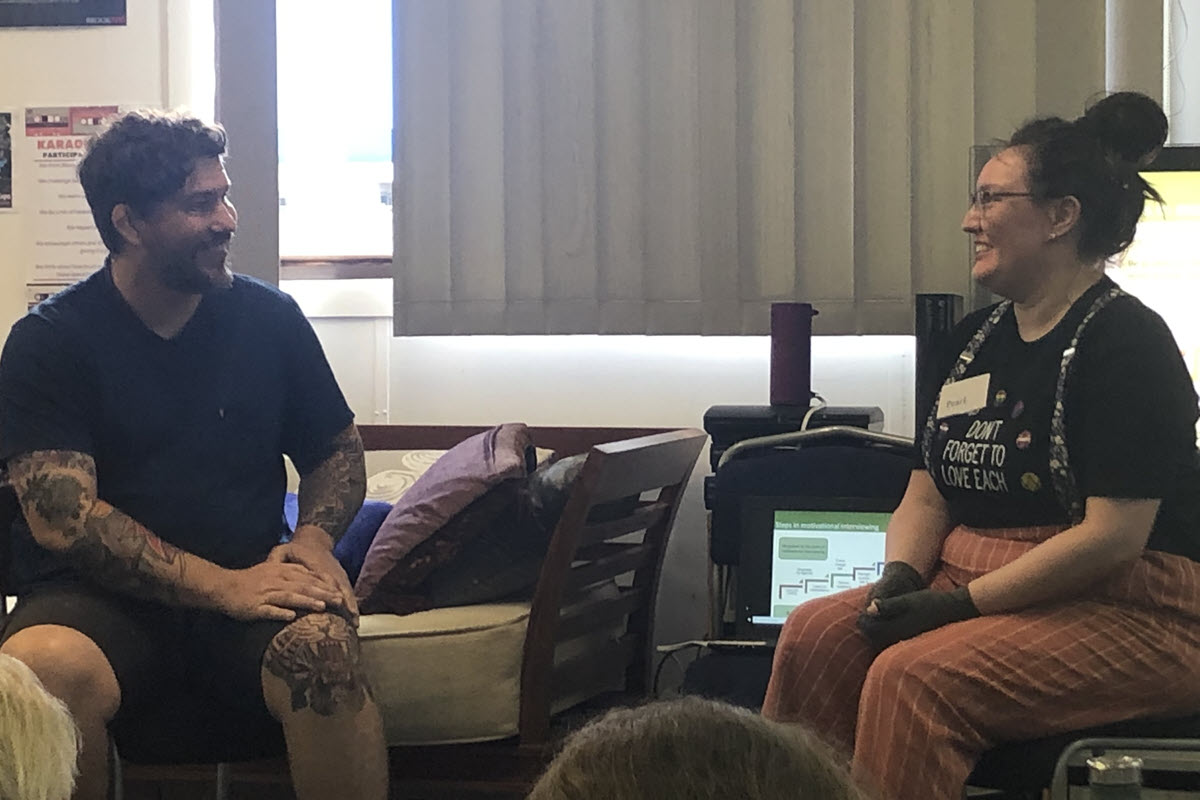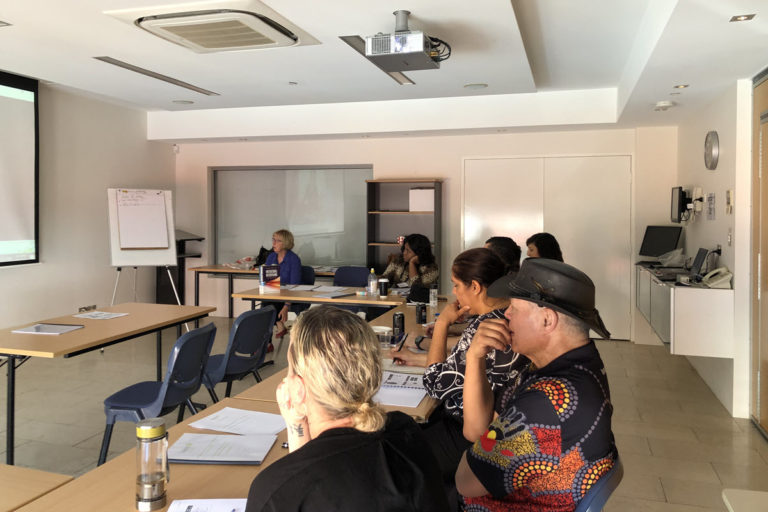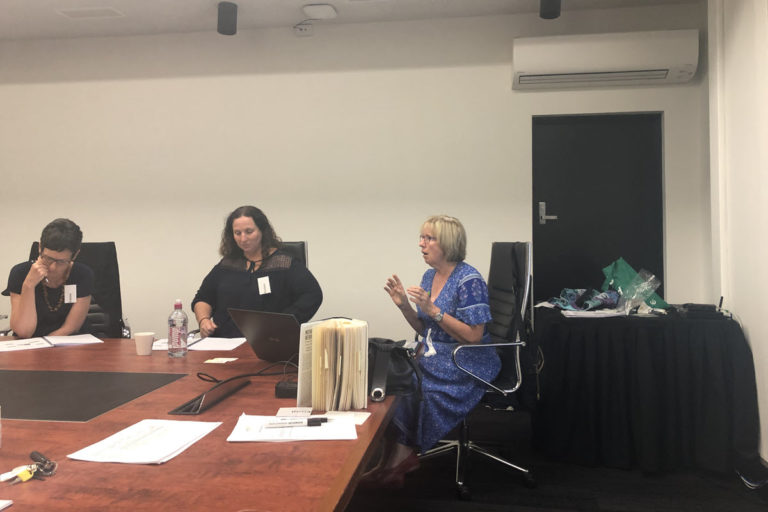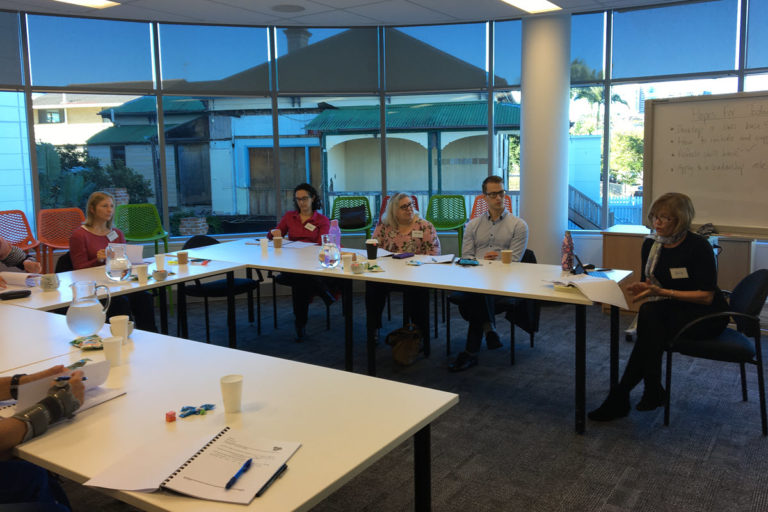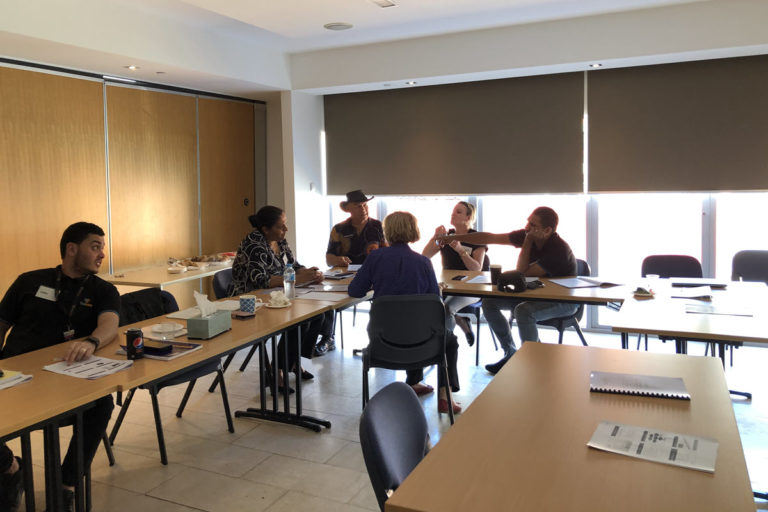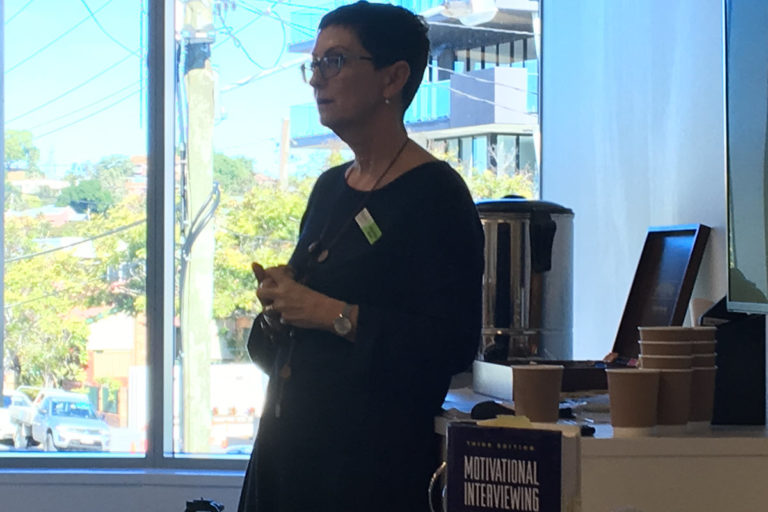Ambivalence and Motivational Interviewing (MI)
During general introductions at Motivational Interviewing Training workshops it is not uncommon to hear participants at the start of the day say they want to learn “how to motivate” others. Generally, these “others” are individuals they are in a supportive or helping relationship with. As facilitators responding, it is important firstly to ask, “Is it possible to motivate another person?” and to recognize that motivation is neither present nor absent in an individual but is a constantly changing state or process within.
All people are motivated, but not always in the direction clinicians and helpers would like them to be. For example, some people are motivated to keep smoking (known as maintaining the status quo) and others are motivated to stop smoking and move towards behaviour change. Motivation is present in both examples, yet it is the direction of the motivation which is the important element as individuals usually feel both a push towards and a pull away from change (Miller & Rollnick, 2013 & Romano 2021).
The process of behaviour change involves resolving the push and pull of the change (Clark 2019, Miller, 2012). Becoming ambivalent is the first step in developing motivation to change. Motivational Interviewing (MI) offers an alternative response to ambivalence, as it recognizes that ambivalence is normal, and it defines readiness to change as a dynamic and not a static factor (Miller, 2012).
Motivational Interviewing helps people explore ambivalence – what keeps the person doing what they do and what might move them towards wanting to make a change. It is a shift from the pre-contemplative stage of change, e.g. a client wanting to smoke, towards contemplation of change, e.g. a client thinking of quitting smoking (Prochaska & DiClemente, 1984). What clinicians and helpers evoke from clients therefore are arguments for both wanting to keep smoking – described as ‘sustain talk’ and arguments or reasons to stop smoking- described as ‘change talk’ (Miller & Rollnick, 2013).
Motivational Interviewing conversations assist clients to articulate this sense of being ‘of two minds’ (AIPC, 2015) by verbalizing the pros and cons of the behaviour change (Everett, Salamonson, Zecchin, & Davidson, 2009). This can be achieved by exploring the Good things/Less good things.
Good things
What are the good things about…? (name the behaviour under review).
What do you enjoy about…?
What would you miss about…?
Less good things
What about some of the less good things? What are some of the things you don’t like so much about…? (name the behaviour under review).
How do you feel about…? (explore the specifics the client has named as less good).
What are the things you wouldn’t miss about…? (explore the specifics the client has named).
This video might help you in understanding and responding to ambivalence:
Veriti conducts regular Introduction to Motivational Interviewing workshops, as well as Advanced Motivational Interviewing workshops. Veriti can also provide in house training for your organisation. For more information, please contact us.
References
Australian Institute of Professional Counselling. AIPC (2015). Principles and techniques of motivational interviewing.
http://www.aipc.net.au/articles/principles-and-techniques-of-motivational-interviewing/ Viewed 5 March 2017.
Clark, Michael. “Motivational interviewing for deradicalization: Increasing the readiness to change.” Journal for Deradicalization 20 (2019): 47-74.
Everett, B., Salamonson, Y., Zecchin, R., & Davidson, P. M. (2009). Reframing the dilemma of poor attendance at cardiac rehabilitation: An exploration of ambivalence and the decisional balance. Journal of Clinical Nursing, 18, 1842-1849. doi: 10.1111/j.1365-2702.2008.02612.x
Miller, W. (2012). Motivational Interviewing: What It Is, How It Works, How To Learn It. A 2 Day workshop, 7 & 8 of November, Brisbane, Australia.
Miller, W. R., & Rollnick, S. (2013). Motivational Interviewing: Helping people change (3rd ed.). New York: Guilford Press.
Prochaska, J.O., & DiClemente, C.C. (1984).The transtheoretical approach: crossing traditional boundaries of therapy.
Homeward, Il: Dow/Jones Irwin. Romano, M., Arambasic, J. & Peters, L. (2021) Motivational interviewing for social anxiety disorder: An examination of the technical hypothesis, Psychotherapy Research, 31:2, 224-235, DOI: 10.1080/10503307.2020.1751892

